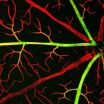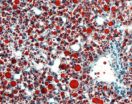(Press-News.org) The latest telescope at ESO's Paranal Observatory in Chile -- the VLT Survey Telescope (VST) -- was inaugurated today at the Italian National Institute for Astrophysics (INAF) Observatory of Capodimonte, in Naples, Italy. The ceremony was attended by the Mayor of Naples, Luigi De Magistris, the INAF President, Giovanni Bignami, the ESO representatives Bruno Leibundgut and Roberto Tamai, and the main promoter of the telescope, Massimo Capaccioli of the University of Naples Federico II and INAF.
The VST is a state-of-the-art 2.6-metre telescope, with the huge 268-megapixel camera OmegaCAM at its heart. It is designed to map the sky both quickly and with very fine image quality. The VST is a joint venture between ESO and INAF and OmegaCam has been provided by the OmegaCam consortium [1]. This new telescope is the largest telescope in the world exclusively dedicated to surveying the sky at visible wavelengths (eso1119 - http://www.eso.org/public/news/eso1119/). The occasion of the inauguration has been marked by the release of a dramatic picture of the Carina Nebula taken with the new telescope.
This star formation region is one of the most prominent and frequently imaged objects of the southern sky. It has been the subject of many earlier images with ESO telescopes (eso1208 - http://www.eso.org/public/news/eso1208/ , eso1145 - http://www.eso.org/public/news/eso1145/ , eso1031 - http://www.eso.org/public/news/eso1031/ , eso0905 - http://www.eso.org/public/news/eso0905/ ). However, the glowing gas cloud is huge and it is difficult for most large telescopes to study more than a tiny part of it at once. This makes it an ideal target for the VLT Survey Telescope and its big camera, OmegaCAM. The VST delivers very sharp images because of its high quality optics and the excellent site. But, as it was designed for surveys of the sky, it also has a very wide field of view that can take in almost all of the Carina Nebula in a single picture.
This object was a natural target when the President of Chile, Sebastian Piñera, accompanied by the First Lady, Cecilia Morel, were distinguished guests at the Paranal Observatory on 5 June 2012 (eso1223 - http://www.eso.org/public/news/eso1223/) and participated in observations with the VST. The picture that the President helped to take on this occasion has now been combined with other recent VST images of the Carina Nebula to produce one of the most richly detailed and colourful views of this object ever created.
The Carina Nebula is a huge stellar nursery lying about 7500 light-years from Earth in the constellation of Carina (The Keel) [2]. This cloud of glowing gas and dust is one of the closest star formation regions to the Earth and includes several of the brightest and most massive stars known. The Carina Nebula is a perfect laboratory for astronomers studying the violent births and early lives of stars.
The conspicuous red colour of the picture comes from hydrogen gas in the nebula that is glowing under the harsh ultraviolet light from many young and hot stars [3]. Other colours, originating from other elements in the gas, are also visible, as well as many dust clouds. Just above the centre of the picture lies the bright star Eta Carinae (eso0817 - http://www.eso.org/public/news/eso0817/). This huge and highly unstable star brightened dramatically in the nineteenth century and is a good candidate for a future supernova explosion.
INFORMATION:
Notes
[1] The VST programme was a joint venture between the INAF-Osservatorio Astronomico di Capodimonte, Naples, Italy and ESO. INAF designed and built the telescope with the collaboration of leading Italian industries and ESO was responsible for the enclosure and the civil engineering works at the site. OmegaCAM, the VST's camera, was designed and built by a consortium including institutes in the Netherlands, Germany and Italy with major contributions from ESO. The new facility is operated by ESO, which also archives and distributes data from the telescope. For further details please refer to eso1119 (http://www.eso.org/public/news/eso1119/).
[2] Carina is the keel of the mythological ship Argo, of Jason and the Argonauts fame.
[3] The special filter for observing hydrogen emission was kindly made available by the VPHAS+ Consortium.
More information
The year 2012 marks the 50th anniversary of the founding of the European Southern Observatory (ESO). ESO is the foremost intergovernmental astronomy organisation in Europe and the world's most productive astronomical observatory. It is supported by 15 countries: Austria, Belgium, Brazil, the Czech Republic, Denmark, France, Finland, Germany, Italy, the Netherlands, Portugal, Spain, Sweden, Switzerland and the United Kingdom. ESO carries out an ambitious programme focused on the design, construction and operation of powerful ground-based observing facilities enabling astronomers to make important scientific discoveries. ESO also plays a leading role in promoting and organising cooperation in astronomical research. ESO operates three unique world-class observing sites in Chile: La Silla, Paranal and Chajnantor. At Paranal, ESO operates the Very Large Telescope, the world's most advanced visible-light astronomical observatory and two survey telescopes. VISTA works in the infrared and is the world's largest survey telescope and the VLT Survey Telescope is the largest telescope designed to exclusively survey the skies in visible light. ESO is the European partner of a revolutionary astronomical telescope ALMA, the largest astronomical project in existence. ESO is currently planning the 39-metre European Extremely Large optical/near-infrared Telescope, the E-ELT, which will become "the world's biggest eye on the sky".
Links
* Photos of VST: http://www.eso.org/public/images/archive/search/?category=1111&adv=&description=VST
* Photos taken with the VST: http://www.eso.org/public/images/archive/search/?adv=&facility=62
* Photos of OmegaCAM: http://www.eso.org/public/images/archive/search/?category=1111&adv=&description=OmegaCAM
Contacts
Massimo Capaccioli
University of Naples Federico II and INAF-Capodimonte Astronomical Observatory
Naples, Italy
Tel: +39 081 557 5601
Cell: +39 335 677 6940
Email: capaccioli@na.infn.it
Richard Hook
ESO, La Silla, Paranal, E-ELT & Survey Telescopes Press Officer
Garching bei München, Germany
Tel: +49 89 3200 6655
Cell: +49 151 1537 3591
Email: rhook@eso.org
Image of the Carina Nebula marks inauguration of VLT Survey Telescope
2012-12-06
ELSE PRESS RELEASES FROM THIS DATE:
Research on blood vessel proteins holds promise for controlling 'blood-brain barrier'
2012-12-06
Working with mice, Johns Hopkins researchers have shed light on the activity of a protein pair found in cells that form the walls of blood vessels in the brain and retina, experiments that could lead to therapeutic control of the blood-brain barrier and of blood vessel growth in the eye.
Their work reveals a dual role for the protein pair, called Norrin/Frizzled-4, in managing the blood vessel network that serves the brain and retina. The first job of the protein pair's signaling is to form the network's proper 3-D architecture in the retina during fetal development. ...
Immune system kill switch could be target for chemotherapy and infection recovery
2012-12-06
Researchers have discovered an immune system 'kill switch' that destroys blood stem cells when the body is under severe stress, such as that induced by chemotherapy and systemic infections.
The discovery could have implications for protecting the blood system during chemotherapy or in diseases associated with overwhelming infection, such as sepsis.
The kill switch is triggered when internal immune cell signals that protect the body from infection go haywire. Dr Seth Masters, Dr Motti Gerlic, Dr Benjamin Kile and Dr Ben Croker from the Walter and Eliza Hall Institute ...
Nobody's perfect
2012-12-06
Researchers at Cambridge and Cardiff have found that, on average, a normal healthy person carries approximately 400 potentially damaging DNA variants and two variants known to be associated directly with disease traits. They showed that one in ten people studied is expected to develop a genetic disease as a consequence of carrying these variants.
It has been known for decades that all people carry some damaging genetic variants that appear to cause little or no ill effect. But this is the first time that researchers have been able to quantify how many such variants each ...
Overestimation of abortion deaths in Mexico hinders maternal mortality reduction efforts
2012-12-06
This press release is available in Spanish and Portuguese.
A collaborative study conducted in Mexico by researchers of the University of West Virginia-Charleston (USA), Universidad Popular Autónoma del Estado de Puebla (Mexico), Universidad de Chile and the Institute of Molecular Epidemiology of the Universidad Católica de la Santísima Concepción (Chile), revealed that IPAS-Mexico overestimated rates of maternal and abortion mortality up to 35% over the last two decades. The research, recently published in the International Journal of Women's Health highlights that Mexico ...
Researchers discover regulator linking exercise to bigger, stronger muscles
2012-12-06
BOSTON - Scientists at Dana-Farber Cancer Institute have isolated a previously unknown protein in muscles that spurs their growth and increased power following resistance exercise. They suggest that artificially raising the protein's levels might someday help prevent muscle loss caused by cancer, prolonged inactivity in hospital patients, and aging.
Mice given extra doses of the protein gained muscle mass and strength, and rodents with cancer were much less affected by cachexia, the loss of muscle that often occurs in cancer patients, according to the report in the Dec. ...
A relationship between cancer genes and the reprogramming gene SOX2 discovered
2012-12-06
A team of researchers from the Spanish National Cancer Research Centre (CNIO), led by Manuel Serrano, from the Tumour Suppression Group, together with scientists from London and Santiago de Compostela, has discovered that the cellular reprogramming gene SOX2, which is involved in several types of cancers, such as lung cancer and pituitary cancer, is directly regulated by the tumor suppressor CDKN1B(p27) gene, which is also associated with these types of cancer.
The same edition of the online version of the journal also includes a study led by Massimo Squatrito, who recently ...
Study IDs gene that turns carbs into fat
2012-12-06
Berkeley — A gene that helps the body convert that big plate of holiday cookies you just polished off into fat could provide a new target for potential treatments for fatty liver disease, diabetes and obesity.
Researchers at the University of California, Berkeley, are unlocking the molecular mechanisms of how our body converts dietary carbohydrates into fat, and as part of that research, they found that a gene with the catchy name BAF60c contributes to fatty liver, or steatosis.
In the study, to be published online Dec. 6 in the journal Molecular Cell, the researchers ...
ACNP: Novel NMDA receptor modulator significantly reduces depression scores within hours
2012-12-06
HOLLYWOOD, FL and EVANSTON, IL, December 6, 2012 -- Naurex Inc., a clinical stage company developing innovative treatments to address unmet needs in psychiatry and neurology, today reported positive results from a Phase IIa clinical trial of its lead antidepressant compound, GLYX-13. GLYX-13 is a novel partial agonist of the NMDA receptor. The Phase Ila results are being presented this week at the 51st Annual Meeting of the American College of Neuropsychopharmacology (ACNP).
The Phase IIa results show that a single administration of GLYX-13 produced statistically significant ...
Research yields understanding of Darwin's 'abominable mystery'
2012-12-06
Research by Indiana University paleobotanist David L. Dilcher and colleagues in Europe sheds new light on what Charles Darwin famously called "an abominable mystery": the apparently sudden appearance and rapid spread of flowering plants in the fossil record.
Writing in the Proceedings of the National Academy of Sciences, the researchers present a scenario in which flowering plants, or angiosperms, evolved and colonized various types of aquatic environments over about 45 million years in the early to middle Cretaceous Period.
Dilcher is professor emeritus at IU Bloomington ...
Environmental chemical blocks cell function
2012-12-06
Bisphenol A, a substance found in many synthetic products, is considered to be harmful, particularly, for fetuses and babies. Researchers from the University of Bonn have now shown in experiments on cells from human and mouse tissue that this environmental chemical blocks calcium channels in cell membranes. Similar effects are elicited by drugs used to treat high blood pressure and cardiac arrhythmia. The results are now presented in the journal "Molecular Pharmacology."
The industrial chemical bisphenol A (BPA) is worldwide extensively utilized for manufacturing polycarbonates ...


